The judging process for Architizer's 12th Annual A+Awards is now away. Subscribe to our Awards Newsletter to receive updates about Public Voting, and stay tuned for winners announcements later this spring.
While Pisa’s off-kilter landmark is probably the most famous of its kind, there are many fascinating tilted buildings in the world. Some are ancient and are tilting due to their age or environmental conditions, while others are modern structures that were designed to be crooked right from the start.

Via All In One and Building Failures
All of them are entertaining architectural curiosities: since we don’t come across buildings like this often, we often marvel at their appearance. Aside from the leaning tower of Pisa, take a lopsided look at 10 of the most famous tilted buildings in the world …
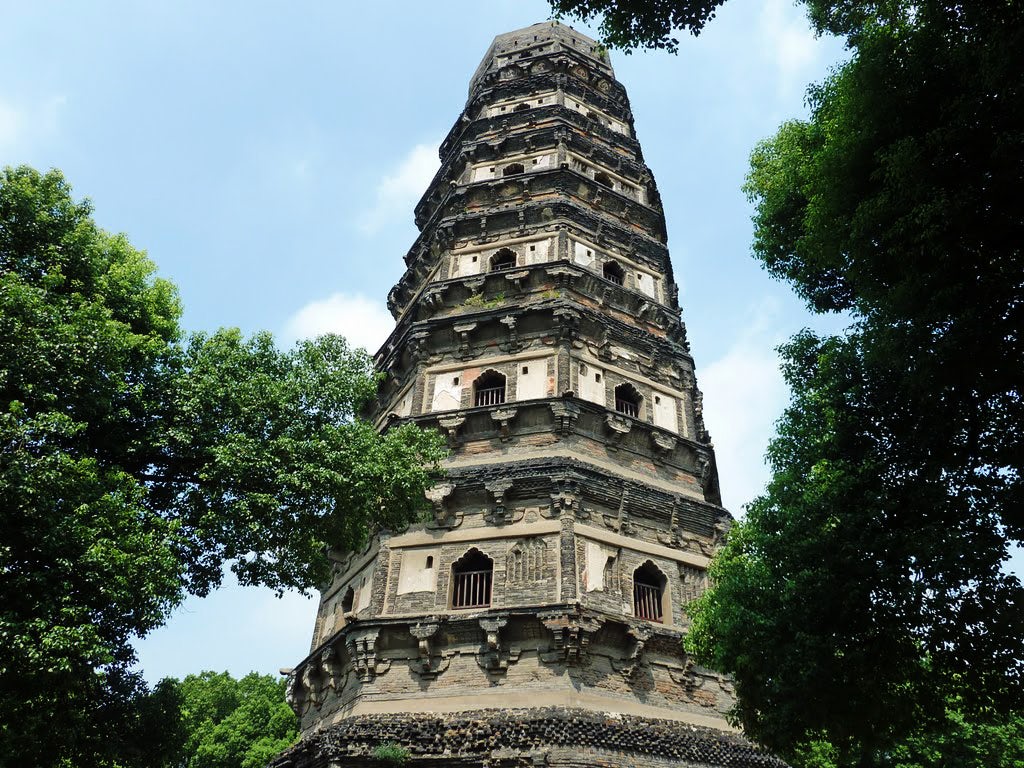
Via Panoramio
Tiger Hill Pagoda, Suzhou, China
The Tiger Hill Pagoda, also known as Yunyansi, was built during the Song dynasty. It is the equivalent of seven stories tall and has eight sides. It is completely built from brick, and is estimated to weigh approximately 6,000 tons. At 154 feet tall, its slant varies from its top to its bottom by more than 7.5 feet. Engineers discovered that its foundation is half rock and half soil, and efforts have been made to stabilize it by pumping concrete into the dirt. It is a beautiful example of the historic style of pagoda construction.
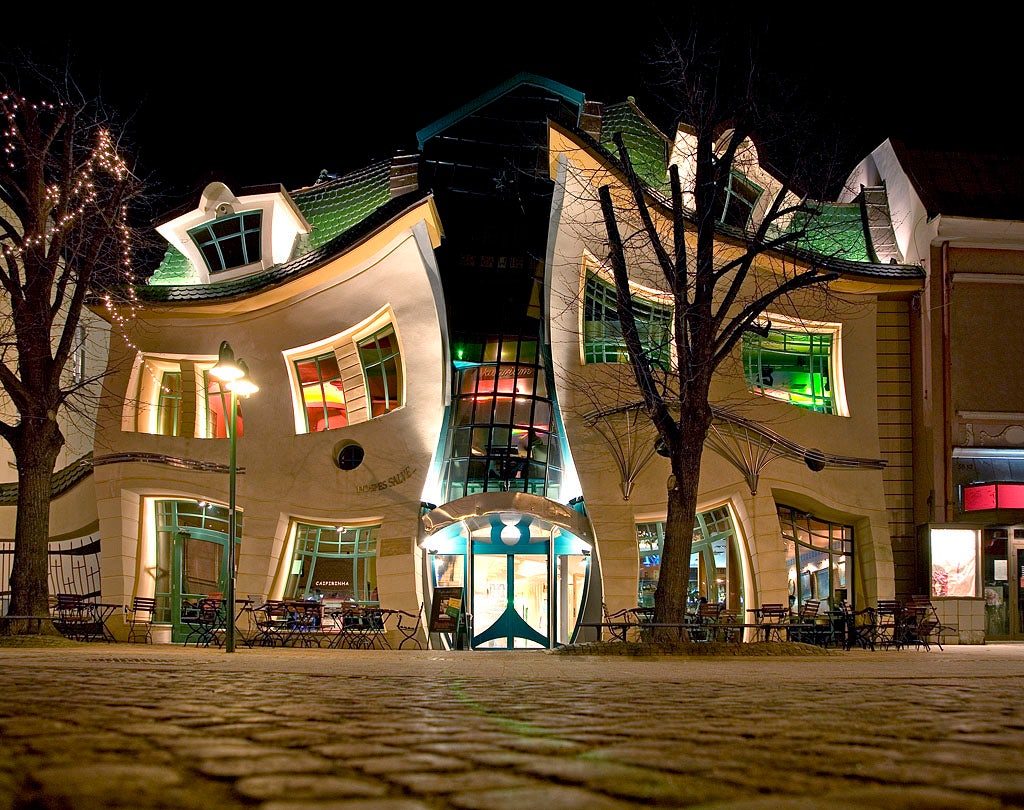
Via Webturystyka
The Crooked House, Szotynski and Zaleski, Sopot, Poland
The building has approximately 43,000 square feet of usable space and is a part of a mall. It is the headquarters for Radio Muzyka Fakty FM, a restaurant, retail space and an arcade. The interior is filled with brightly painted interiors and a fanciful assortment of colored lighting. There are a multitude of windows to let in light, and the front façade features an artistic blending of windows in cool shades. The interior staircase is open to the public spaces, and seating areas are situated to provide comfortable and accessible gathering spots.
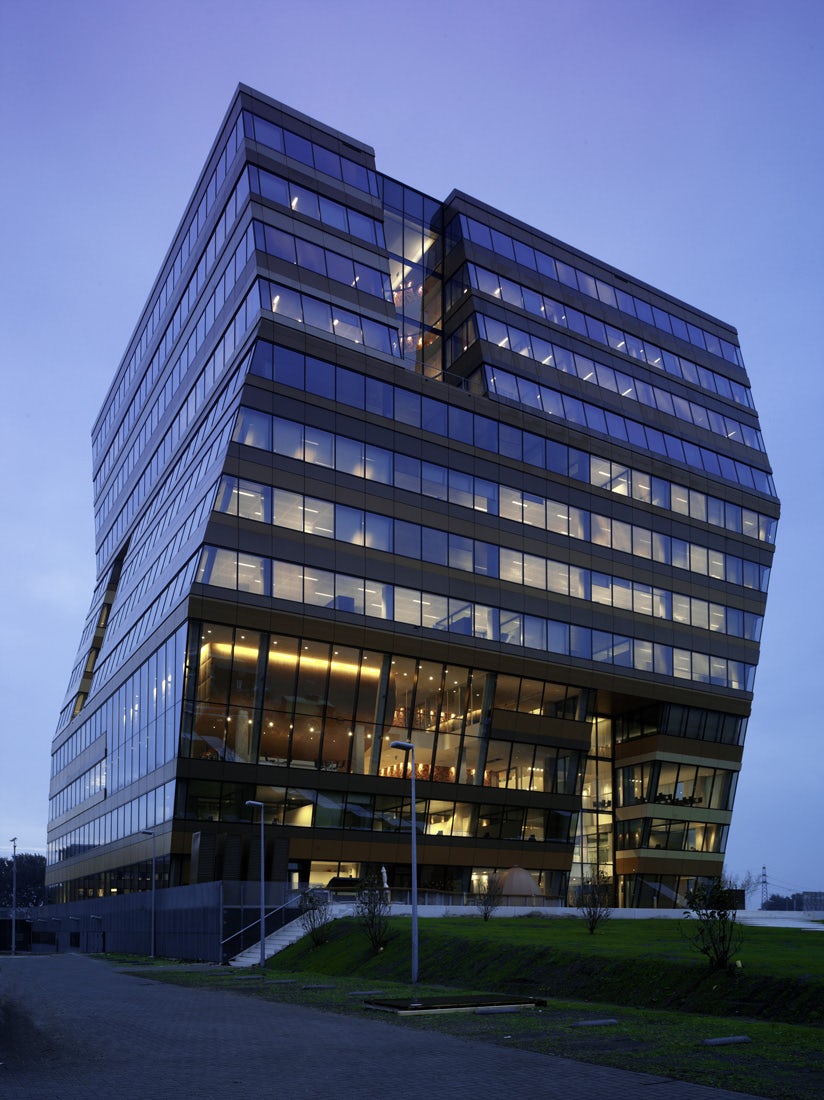
© Luuk Kramer
Via Archicentral
Menzis Office Building by de Architekten Cie, Groningen, The Netherlands
This office building in Groningen, The Netherlands, was built for the Menzis insurance company. It was situated at the edge of the city, and was designed to lean over the adjacent street, gradually as the 12 floors rise higher within the building. It is divided into three segments shaped as identical prisms. Each of the three segments has four stories, which are intersected by a vertical atrium. The building contains a medical center, an auditorium, a restaurant training and meeting areas with views of the Winschoterdiep Canal.
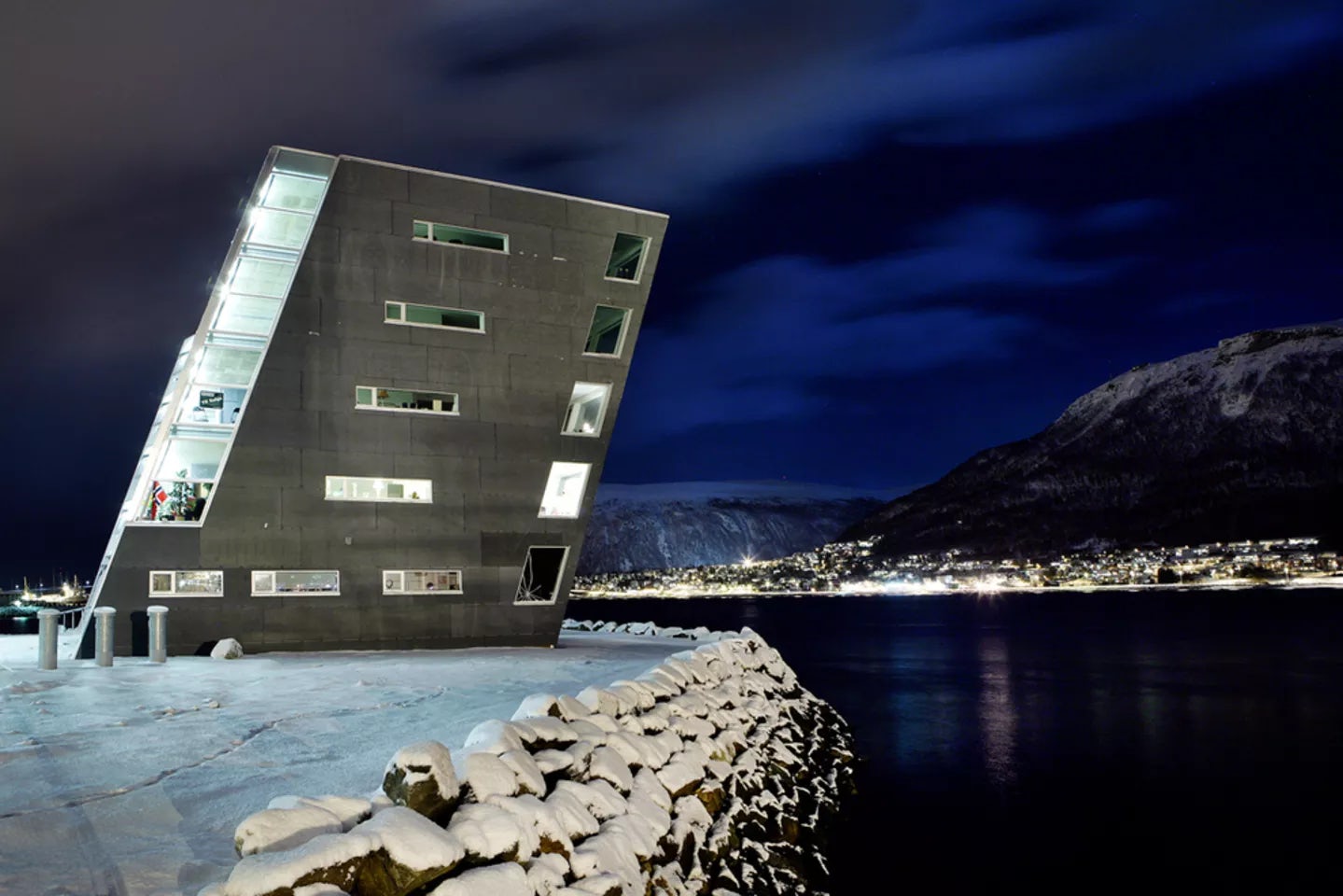
Photo by Yngve Olsen Sæbbe via Architettura Italiana
Strandkanten,by 70ºN Arkitektur, Tromsø, Norway
This building in Tromsø, Norway is situated right on the coastline. It is a project designed to reclaim an area of the Tromsø Strait, forming a brand new housing development just south of the town center. It is designed to reduce the need for transportation in the area and projects that increased activity will result in the town due to the closer proximity of these new housing spaces. The project features plenty of glass walls to catch available sunlight, outdoor circular stairs and play spaces for active families.
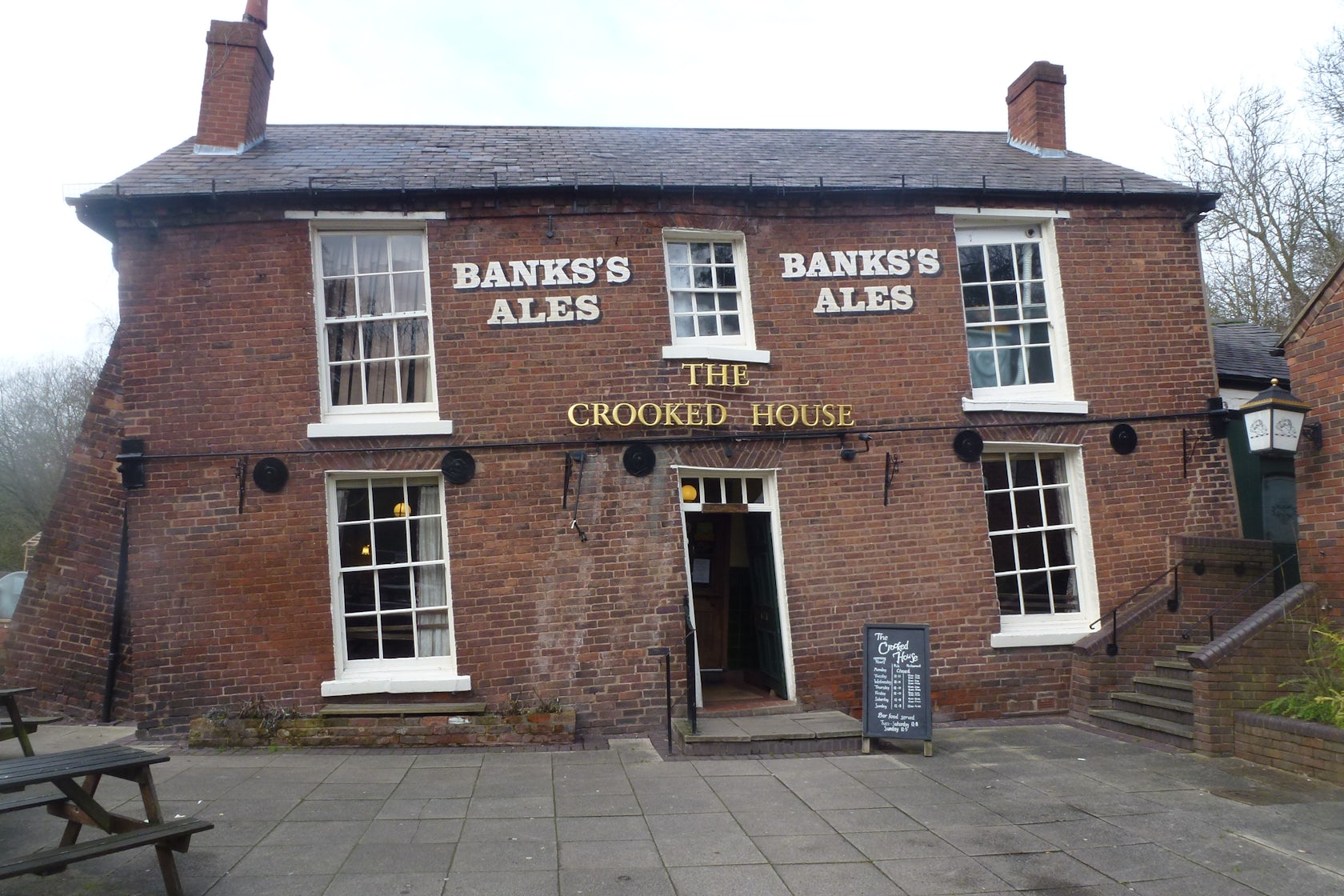
Via Mapio
The Crooked House, South Staffordshire, England
Built in 1765, the Crooked House was first a farmhouse. The area was used for mining in the 1800s, and eventually, underground activity caused one end of the structure to gradually sink. There is a four foot difference from side to side on the building now. Eventually, it became a public house called Siden House—the word “siden” means crooked in the Black Country local dialect. At one time it was also named the Glynne Arms in honor of the area landowner. In the 1940s it was condemned as being unsafe.
It was scheduled to be demolished, but the Dudley and Wolverhampton Breweries rebuilt it with girders and buttresses to retain its crooked angles, while making it safe for use. It is currently a pub and restaurant which contributes to optical illusions due to the tilted walls. It is possible to see marbles looking as if they are rolling uphill, and glasses appearing to slide across tables.
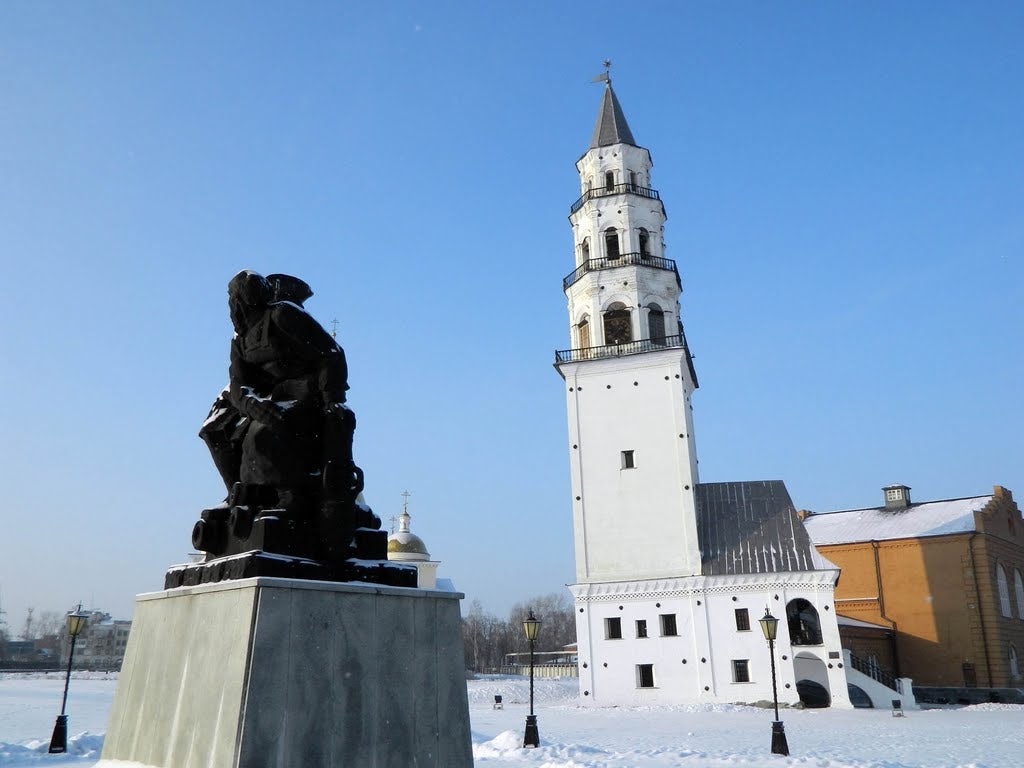
Via Panoramio
The Leaning Tower of Nevyansk by Akinfiy Demidov, Nevyansk, Russia
The small town of Nevyansk was founded by Peter the Great. Though it has existed since 1701, it did not officially become a town until 1919. Peter the Great funded the building of the tower and it is the most famous structure in the Middle Ural region.
The tower has eight floors, with each devoted to a different activity. Some historians believe that Demidov used the tower as a bank, while others speculate that it was a prison, a bell tower or a watch tower. There is a strange room inserted between the fourth and fifth floors, for which no one knows the exact purpose. It is an acoustically perfect room: it is possible to stand in one corner and whisper so that another person opposite will hear exactly what has been said.
Recent archeological investigation shows that the tower probably suffered from being built on shifting soil. It was already significantly underway before it was discovered, so it was finished with the thought that correcting measures could be applied. It was built with construction techniques and materials far advanced for its time, such as reinforced concrete. But, it had a minor defect, and it has remained slightly tilted ever since.

Via Architectuul
Gate of Europe Towers by Philip Johnson and John Burgee, Madrid, Spain
These towers are actually twin office buildings. They are located on the Paseo de la Castellana. Each of the buildings is 115 meters, or 374 feet tall, with 26 floors in each. Both have an inclination of 15 degrees. The west tower has a helicopter pad with a blue outline. The east tower has one with a red outline. They are the first skyscrapers to incline in the world, and have been featured in several films.

Via Nuaodisha
The Leaning Temple of Huma by Ganga Vamsi Emperor Anangabhima Deva-III, Orissa, India
This temple is described as the only leaning temple in the world. It is located in Orissa, India. The structure is leaning, but there has been no conclusive evidence to explain why. It may be that it was actually design to lean, or it may be due to a structural weakness in the foundation. It is situated near the Mahanadi river, and speculation exists that water in the underground soil or an earthquake may have contributed to its current state.
The temple is dedicated to Shiva, a god in the Hindu religion. Sculptors, historians and scientific researchers have investigated the temple with interest. The level of inclination has not yet been measured, but priests and village residents note that nothing about the temple has changed in the past 40 to 50 years.

Via Jamrock Magazine
Capital Gate Tower by RMJM, Abu Dhabi, United Arab Emirates
Capital Gate Tower is actually a mixed-use, skyscraper hotel complex. It leans 18 degrees westward, which is four times further than the iconic Leaning Tower of Pisa. Unlike the ancient Pisa tower, this one has a pre-cambered core which stabilizes it. It’s the first ever constructed, and it required 490 piles driven almost 100 feet into the ground and an enormous amount of steel-reinforced concrete.
Covering the system of underground piles is a steel diagrid exoskeleton. The central core slants opposite to the way the structure leans. Everything works in consort to compensate for wind, seismic pressures and gravitational pressures caused by the building.
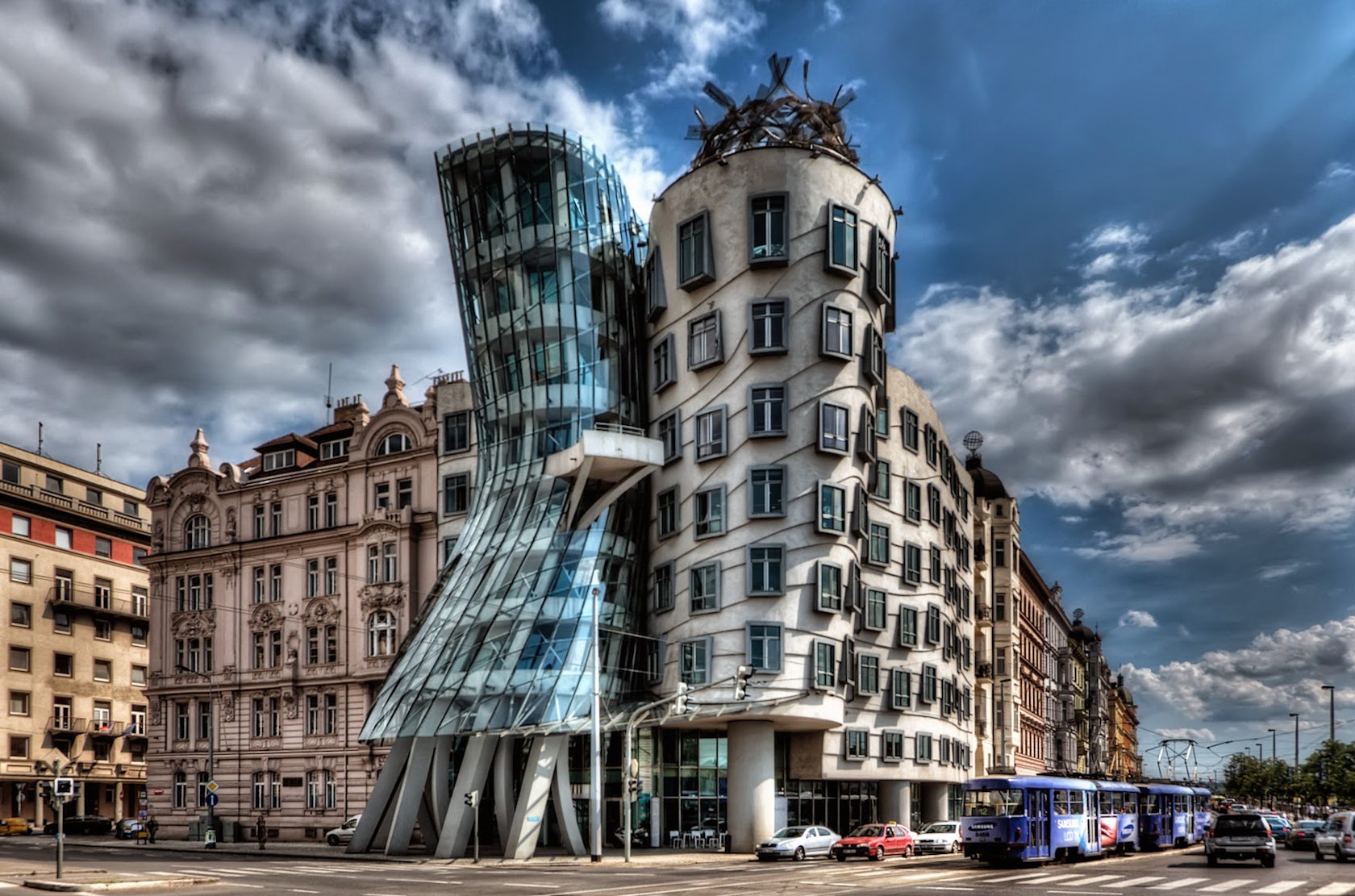
Dancing House by Frank Gehry, Prague, Czech Republic
Gehry’s Dancing House was built in the space left when a 1945 bombing destroyed the original Neo-Renaissance house. The remains of that house were removed from the site in 1960. It was the desire of client ING that the site become an iconic Prague building, and they provided a huge budget for Gehry. The resulting building is certainly unusual: It is a 3D abstract of a man and woman dancing together, akin to Fred Astaire and Ginger Rogers.
It took 99 concrete panels to build the house. Each of these is a different dimension and shape, so each one required customized wooden formwork. The highly unique house caused a huge amount of public debate, and the project took two years to complete. Eventually though, upon completion in 1996, it has been broadly embraced as a masterpiece within the Prague cityscape.
This article was first featured on Housely. All images are from Housely unless otherwise stated. Additional reporting by Paul Keskeys.









